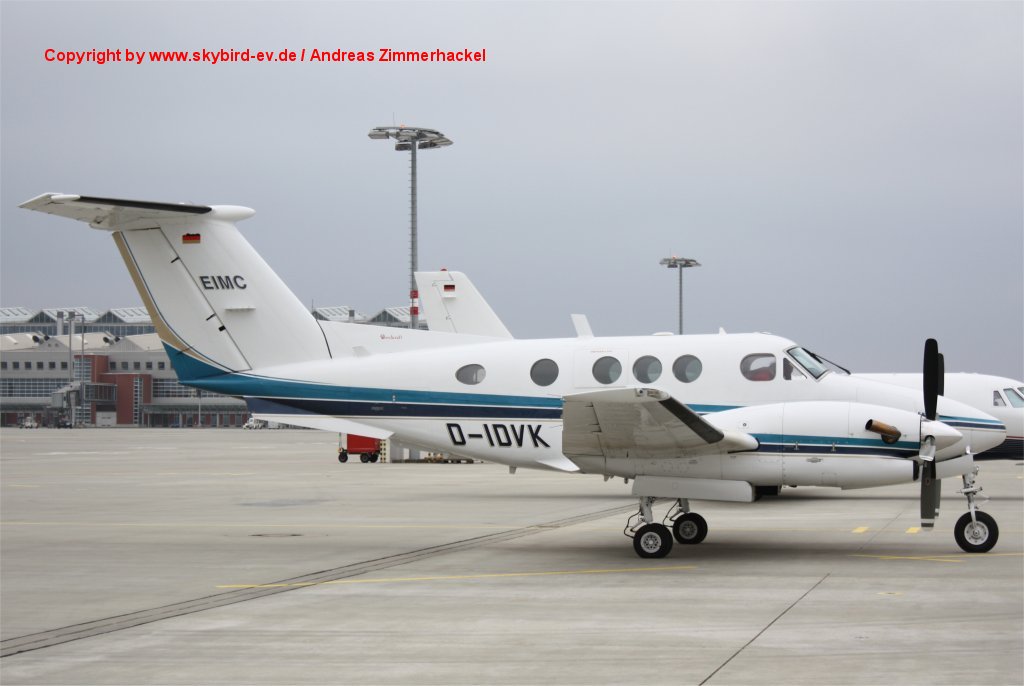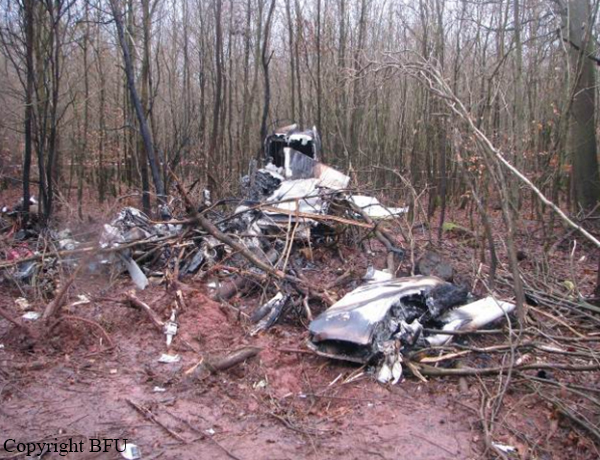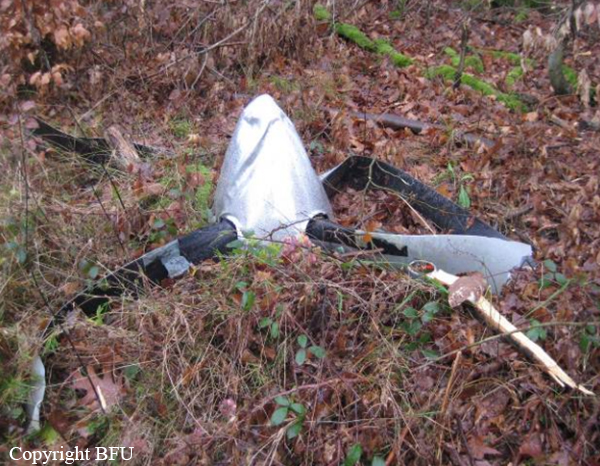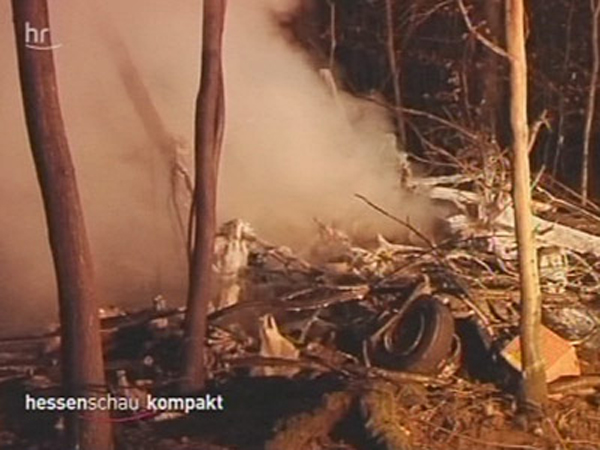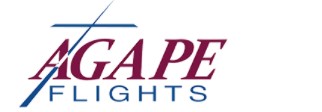Country
Crash of a Beechcraft 65-A90 King Air in Jacmel
Date & Time:
Jan 23, 2010
Registration:
N316AF
Survivors:
Yes
MSN:
LJ-214
YOM:
1967
Crew on board:
2
Crew fatalities:
Pax on board:
0
Pax fatalities:
Other fatalities:
Total fatalities:
0
Circumstances:
The crew was apparently completing a cargo flight from Florida. Upon landing at Jacmel Airport, the undercarriage collapsed. The twin engine aircraft went out of control, veered off runway and came to rest against trees. Both occupants escaped uninjured while the aircraft was damaged beyond repair.

Crash of a Beechcraft C90GTi King Air in Les Éplatures
Date & Time:
Jan 15, 2010 at 1407 LT
Registration:
HB-GPL
Survivors:
Yes
Schedule:
Les Éplatures - Dole
MSN:
LJ-1936
YOM:
2009
Crew on board:
2
Crew fatalities:
Pax on board:
2
Pax fatalities:
Other fatalities:
Total fatalities:
0
Captain / Total hours on type:
62.00
Aircraft flight hours:
89
Aircraft flight cycles:
68
Circumstances:
The crew was departing Les Eplatures Airport on a training flight to Dole-Tavaux, Jura. During the takeoff roll on runway 24, the pilot-in-command realized that the aircraft' speed did not increase after 88 knots then dropped to 85 knots. He decided to reject the takeoff procedure and initiated an emergency braking procedure. Unable to stop within the remaining distance, the aircraft overran and collided with concrete blocks and the ILS equipment. All four occupants were injured, two seriously. The aircraft was damaged beyond repair.
Probable cause:
The accident was caused by a collision with obstacles after the runway end due to a late take off run interruption decision, most probably due to an involuntary braking action on behalf of the pilot.
The following contributing factors were identified:
- Poor pilot experience on this aircraft model.
- Inadequate take off configuration (flaps).
- Initial multi engine training performed on a different aircraft model.
- Pilot not familiarized with short runway.
The following contributing factors were identified:
- Poor pilot experience on this aircraft model.
- Inadequate take off configuration (flaps).
- Initial multi engine training performed on a different aircraft model.
- Pilot not familiarized with short runway.
Final Report:

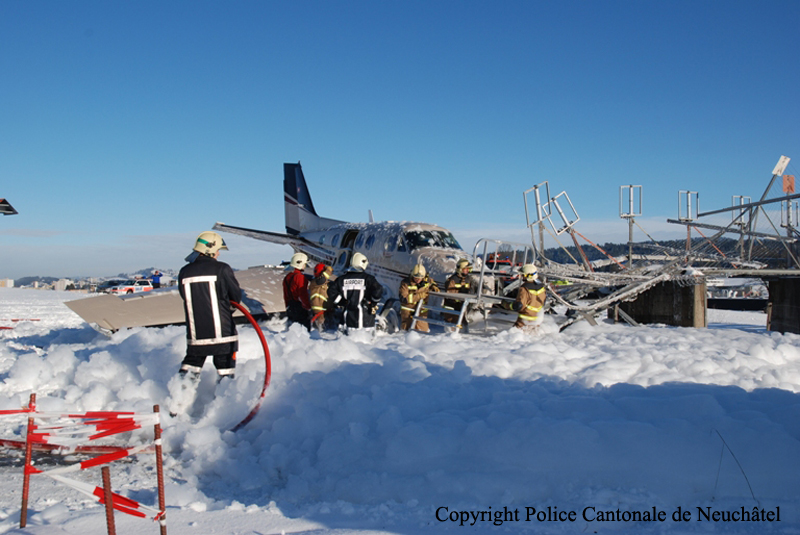
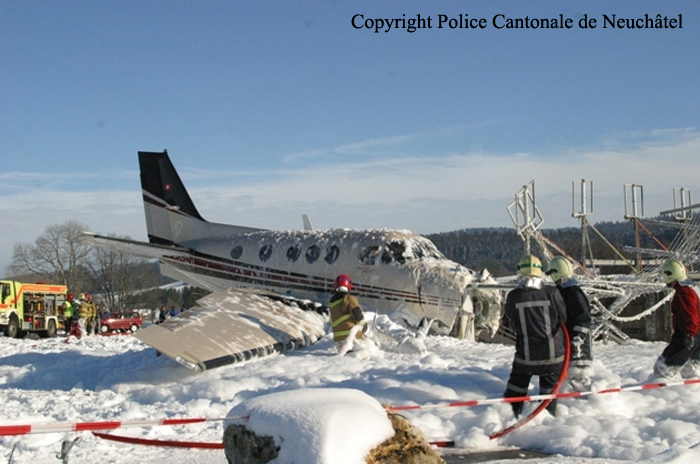


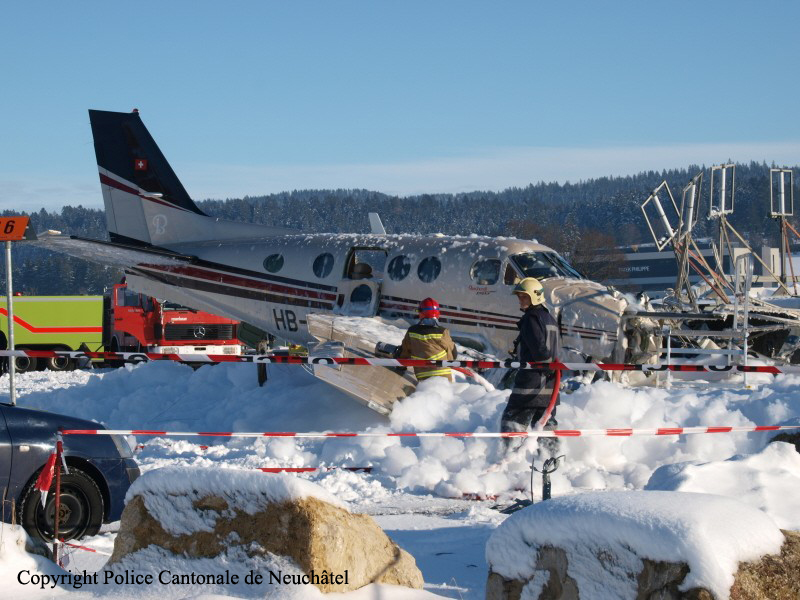

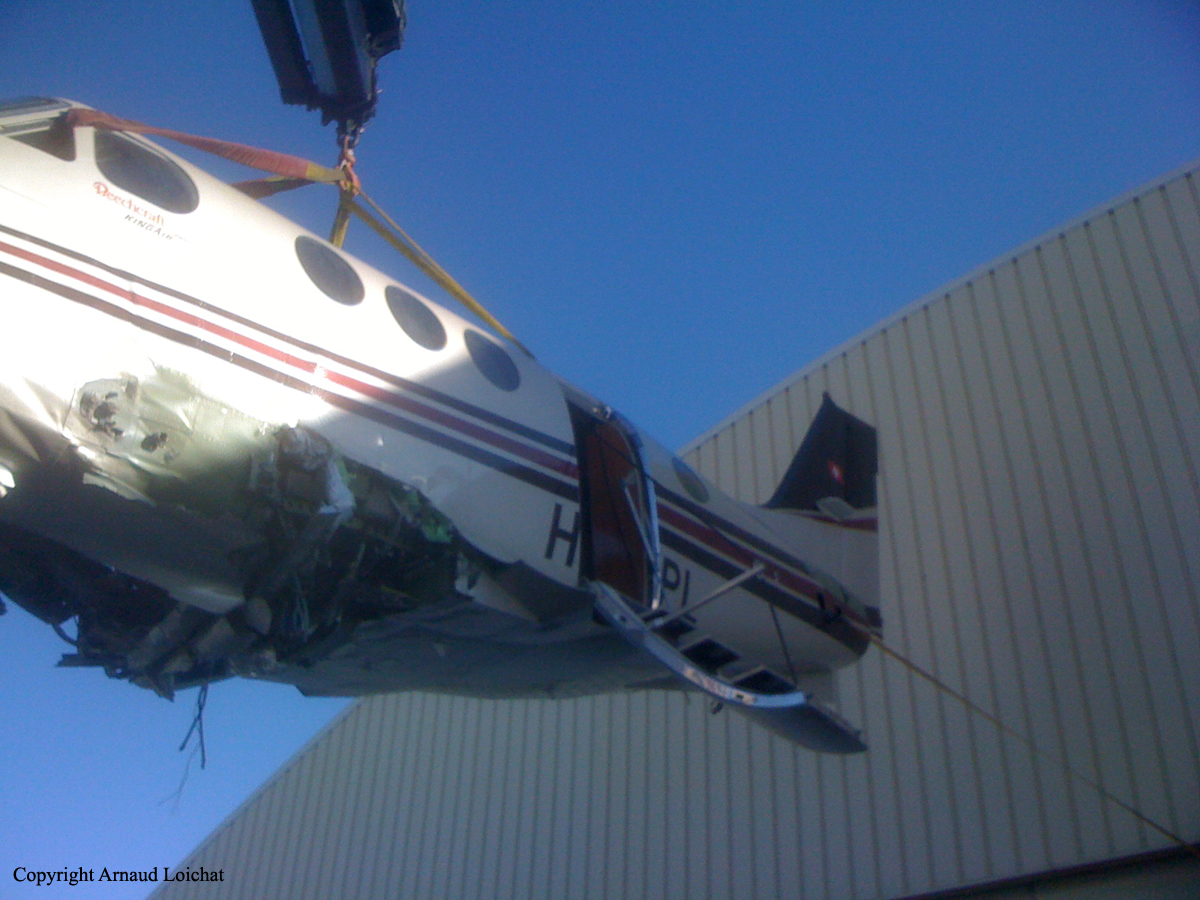

Crash of a Beechcraft F90 King Air in Egelsbach: 3 killed
Date & Time:
Dec 7, 2009 at 1616 LT
Registration:
D-IDVK
Survivors:
No
Schedule:
Bremen - Egelsbach
MSN:
LA-96
YOM:
1981
Crew on board:
1
Crew fatalities:
Pax on board:
2
Pax fatalities:
Other fatalities:
Total fatalities:
3
Aircraft flight hours:
6069
Aircraft flight cycles:
5353
Circumstances:
On a flight from Bremen (EDDW) to Frankfurt-Egelsbach (EDFE), a Beechcraft King Air (F90) changed from IFR to VFR rules prior to the final approach, during which it collided with trees, crashing in a wood and catching fire. On board were the pilot and two passengers. The right hand cockpit seat was occupied by a passenger who conducted radio communications. The approach to runway 27 at EDFE was chosen and executed via the so-called High Performance Aircraft Approach (HPA-approach) as published in the Aeronautical Information Publication (AIP). From 1558 hrs onwards the aircraft was under control by Langen Radar (120.8 MHz), and radar contact was confirmed by the controller. After about six minutes the controller issued the instruction: “[call sign], report if able to cancel IFR”. Subsequently, further instructions were issued to descend to altitude 5,000 ft on QNH 1,012 hPa and fly towards Egelsbach entry point Hotel 1. About four minutes later the controller gave instructions to descend to 4,000 ft, then 3,000 ft. Simultaneously, clearance was given to fly from entry point Hotel 1 to Hotel 2 and then Hotel 3. When overhead entry point Hotel 2 at 1613 hrs, the King Air reported flight conditions as ‘Victor Mike Charlie’ (VMC – Visual Meteorological Conditions) and the switch to VFR (Visual Flight Rules). At this time, the radar recorded the aircraft’s ground speed as about 180 kt. Langen Radar confirmed the report and gave an instruction to continue the descent and report passing 1,500 ft. About 42 seconds later the pilot was instructed to contact Egelsbach Info (130.9 MHz). The radar trace indicated that at this time the aircraft was at an altitude of about 1,800 ft and about 5.5 NM from the airfield. The ground speed was about 180 kt. The first radio call from the Beech to Egelsbach Info took place about 15 seconds later at 1615:06 hrs, at an altitude of about 1,500 ft and ground speed of about 190 kt. Egelsbach Info gave the information that the aircraft was north of the approach centreline and asked for a course correction to the left. They further reported the wind as Easterly at 4 knots with Runway 27 in use. After the response “[call sign], thank you” Egelsbach Info responded: “lights and flashes are on“. During the subsequent approach, the aircraft ground speed reduced over a distance of about 1.3 NM from about 190 kt to about 130 kt (distance to aerodrome about 3 NM). The radar trace indicates that from a position of 3.7 NM from the aerodrome to 2.5 NM from the aerodrome, the aircraft descended from 1,500 ft to 1,000 ft.At about 1616:03 hrs Egelsbach Info advised: “[…]coming up onto centreline”. This was acknowledged with “[call sign]”, following which Egelsbach Info advised: “you are now on centreline”. This was acknowledged with “thank you very much“. The radar trace indicates that at this time the aircraft descended from 900 ft to 800 ft. When Egelsbach Info advised “check your altitude”, the aircraft was at an altitude of about 800 ft. After a further two seconds, at 1616:18 hrs, the radar data indicated the aircraft height as about 700 ft; there was no more indication on the radar screen afterwards. In this area, the terrain is about 620 ft, with trees extending to about 700 ft AMSL. At 1616:24 hrs the aircraft was requested by Egelsbach Info to alter course slightly to the right. Neither a reply was received to this request nor to a subsequent transmission from Egelsbach Info about 22 seconds later. Egelsbach Info assumed there had been a crash and alerted the emergency services, the first of which arrived at the accident site at about 1638 hrs and found a burning wreck.
Probable cause:
The accident was caused by the descent during final approach which led into a fog layer and obstacles.
Contributing factors were:
- A too high descent rate
- An impaired performance and an insufficient situational awareness favored by the intake of alcohol
- That no visual contact with the PAPI or airfield was established
- That the on-board aids to navigation were not or not sufficiently used.
Contributing factors were:
- A too high descent rate
- An impaired performance and an insufficient situational awareness favored by the intake of alcohol
- That no visual contact with the PAPI or airfield was established
- That the on-board aids to navigation were not or not sufficiently used.
Final Report:
